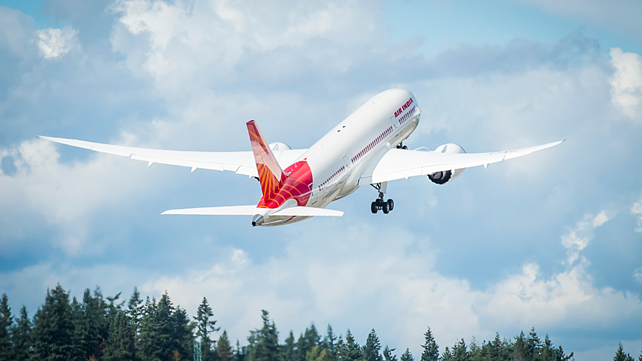
Efforts to exit loss-making national carrier Air India (AI) by the government could see fruition before the year-end. While the first attempt at disinvestment in 2018 failed, a revised attempt with more attractive terms has garnered two bidders. Media reports indicate Tata Group and Low Cost Carrier (LCC) SpiceJet are in the running for a 100% equity stake in AI along with AI’s 100% equity stake in Air India Express Limited (AIXL) and AI’s 50% equity stake in Air India SATS Airport Services Private Limited (AISATS). AI’s other subsidiaries, Air India Engineering Services, Air India Air Transport Services, Airline Allied Services and Hotel Corporation of India, are being transferred to a separate company – Air India Assets Holding Limited (AIAHL) and will not be a part of the disinvestment.
Tough Sell
The disinvestment process has progressed swiftly since May 2017 when NITI Aayog, in its recommendations on Strategic Disinvestment of the Central Public Sector Enterprises, endorsed AI’s disinvestment. In June the same year, the Cabinet Committee on Economic Affairs (CCEA) provided in-principle approval for the strategic disinvestment of AI. It is not hard to see why the government no longer has an appetite for running the national carrier.
Decades of mismanagement rooted in state ownership, poorly planned aircraft purchases and cut-throat competition from Indian carriers with predatory pricing of air tickets has resulted in AI piling up INR 38,366 crore of debt as per FY20 (provisional). This is in addition to INR 22,064 crore of debt parked with AIAHL. As per the Ministry of Civil Aviation (MoCA) information, AI is likely to incur a net loss of INR 9,779 crore (provisional) in FY21, adding to its net loss of INR 7,982 crore in FY20.

Turbulent Environment
Disinvestment efforts for AI have been made even harder due to the disastrous effect of the COVID-19 pandemic on the aviation sector.
As per MoCA between April-December 2020, Indian carriers incurred financial losses to the tune of INR 16,000 crore. Air travel was in free fall last year, with domestic air traffic in April-December 2020 falling to three crore from approximately 10.8 crore in April-December 2019. In the period during April-December 2020, International air traffic declined precipitously to about 55.9 lakh from 5.21 crore in the same period in 2019.
Growth will return to the Indian aviation sector, which before the COVID-19 pandemic, witnessed a Compound Annual Growth Rate (CAGR) of 12.4% in total passenger traffic over a five year period. There are promising signs too, of systemic changes to the maze of regulations and high taxation that airlines in India are subject to. AI’s new owner could benefit from these changes . . .
Indian carriers are also faced with rising Brent Crude oil prices and Aviation Turbine Fuel (ATF) rates, which are already at near pre-COVID-19 period levels. As of the first half of March 2021, Brent Crude oil prices and ATF rates stood at $66 per barrel/ INR 59,977 per Kilo Litre (at Delhi airport terminal 1).

Value Proposition
Air India operates on international and domestic sectors as a full-service carrier, while Air India Express operates from India only to destinations in the Middle East and South-East Asia as an LCC. Both AI and AI Express had a combined aircraft fleet of 146 aeroplanes as of November 1, 2019 comprised of 78 Airbus and 68 Boeing jetliners. AI’s relatively young fleet is made up of new and fuel-efficient jetliners in the Boeing 787 and Airbus A320 Neo. While the average age of the combined aircraft fleets is eight years, AI’s 27 B-787s have an average age of approximately five years. AI’s fleet of 27 A-320 Neos are newer with an average age of approximately two years and are powered by CFM LEAP engines instead of Pratt & Whitney’s troublesome GTF engine.
AI’s fleet of 121 aircraft features A319s (19 + 3 on lease), A320s (5 + 31 on lease), 20 A321s, 3 B777-200 LRs, 15 B777-300ERs and 27 B-787s. Sixty five of these aircraft are owned by AI or are on finance lease/bridge loans, while 21 are on sale and lease back (the aircraft owned by the airline is sold and then taken back on lease). AI’s balance of 35 aircraft are on operating lease. Two of AI’s B777-300ERs are exclusively reserved for VVIP Government travel and have been paid for by the government. Air India Express operates only a single type, the B737- 800 NG and the 25 aircraft fleet comprises of 10 jetliners fully owned by the airline, seven on finance lease and eight on dry lease (leased without pilots).

Future Perfect
A growing economy and demographic makes growth in air travel in a default, and despite the pandemic, India’s growth story in the years to come could see AI rise from the ashes and emerge as a competitive force in international and domestic air travel. Growth will return to the Indian aviation sector, which before the COVID-19 pandemic, witnessed a Compound Annual Growth Rate (CAGR) of 12.4% in total passenger traffic over a five year period. There are promising signs too, of systemic changes to the maze of regulations and high taxation that airlines in India are subject to. AI’s new owner could benefit from these changes but will need to ride through short and medium-term turbulence in its efforts to revive the once proud national carrier.
NB: Photos courtesy: Boeing